Invisalign – Oklahoma City, OK
A Clearer Way to Straighten Teeth
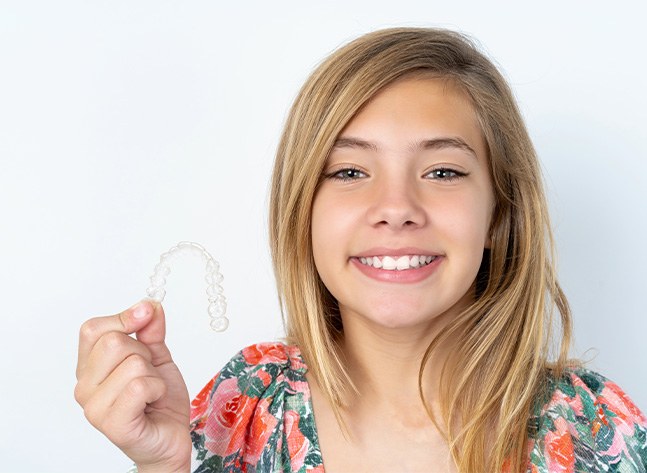
Are you one of the many individuals who don’t like the idea of wearing traditional braces? It is not uncommon for teenagers and adults to desire a more invisible orthodontic option. This is where Invisalign clear aligners come in. At Casady Square Orthodontics, Dr. Ishani is an Invisalign expert who believes in offering effective solutions to meet patients’ needs. If you are interested in learning more about Invisalign in Oklahoma City and its unique benefits, call our orthodontic office to schedule a consultation.
Why Choose Casady Square Orthodontics for Invisalign?
- Dental Insurance Welcome
- Positive, Outgoing Orthodontist Who Takes Great Care of Patients
- Competitive Pricing
How Does Invisalign Work?
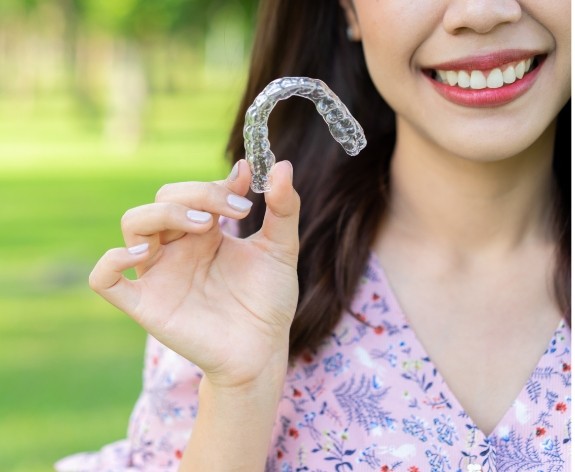
Instead of using regular metal brackets and wires, Invisalign relies on clear, plastic trays that are customized based on your smile. Made of smooth and comfortable materials, they gently move your teeth in the right direction, shifting them into place. Causing minimal, if any, irritation, and offering a more flexible way to straighten smiles, Invisalign presents many advantages to busy, self-conscious teens and adults.
Who Can Invisalign Help?

Invisalign offers a truly unique solution that allows patients to pursue orthodontic treatment without compromising their daily appearance. But that’s not the only perk; the aligners are also effective at correcting a wide range of orthodontic problems, including moderate overcrowding and minor bite misalignment. If you are interested in finding out if you’re a candidate, then schedule a consultation with us so we can learn all about your dental needs and smile goals!
Crowded Teeth
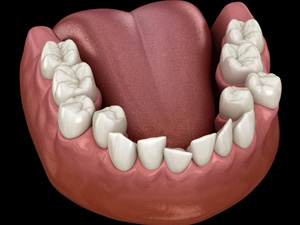
If there isn’t enough room in your mouth for your teeth to sit in their perfectly aligned positions, they will crowd together. While this might not seem like a problem, overcrowding can make it difficult to remove plaque, food particles, and other debris from between your teeth, increasing your risk of common oral health problems, like cavities. The good news is that Invisalign clear aligners can move your teeth into their proper places, improving the appearance and health of your smile in the process!
Gaps Between Teeth
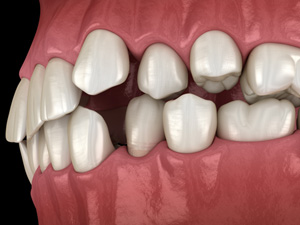
What if you are struggling with the opposite problem (your teeth are spaced apart)? In that case, we recommend taking the same next step: scheduling a consultation with us to explore your orthodontic treatment options! If we determine that you’re a candidate for Invisalign, then we can use a series of custom-made aligners to gently move your teeth into their properly aligned positions, making noticeable gaps a thing of the past.
Overbite
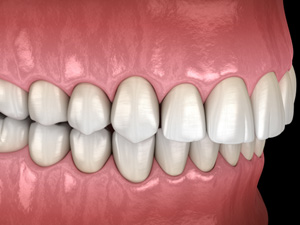
Have you heard of an overbite? It’s when the upper teeth jut out beyond the lower ones, resulting in trouble enunciating clearly, chronic jaw pain, and other serious problems. Fortunately, Invisalign has proven to be effective at correcting mild to moderate bite issues as well. So, if you suspect that you have an overbite (or another bite problem), don’t hesitate to schedule an Invisalign consultation with us.
Underbite
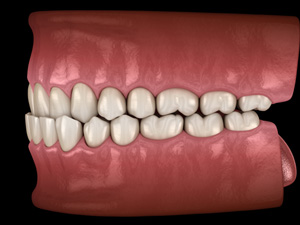
As you may have guessed from the name, an underbite is when the lower teeth sit in front of the upper ones. Although many patients struggling with this orthodontic problem are candidates for Invisalign, a thorough consultation is necessary to determine if clear aligners will produce the kind of results you desire. If the answer is “yes,” then your journey to a straighter, healthier smile will be completely free of metal!
Crossbite
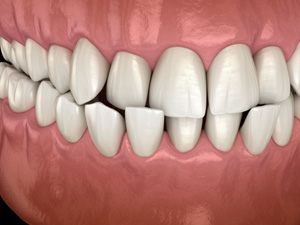
Unfortunately, even relatively minor crossbites can lead to chronic jaw pain and an increased risk of dental damage, like chips and cracks. For this reason, we don’t recommend putting off scheduling a consultation with us. The sooner you come in, the sooner we can determine if Invisalign is an option.
Open Bite
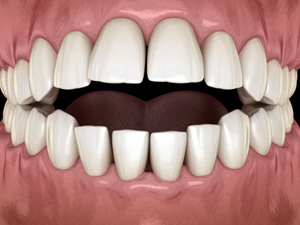
When you bite down, your upper and lower teeth should meet evenly. If they don’t, you might have an open bite, which, like the other orthodontic issues on this list, can lead to several serious problems. Don’t get discouraged though! Invisalign has proven to be a reliable solution, creating happier, healthier smiles that help boost confidence, improve appearance, and generate greater oral health.
Benefits of Invisalign
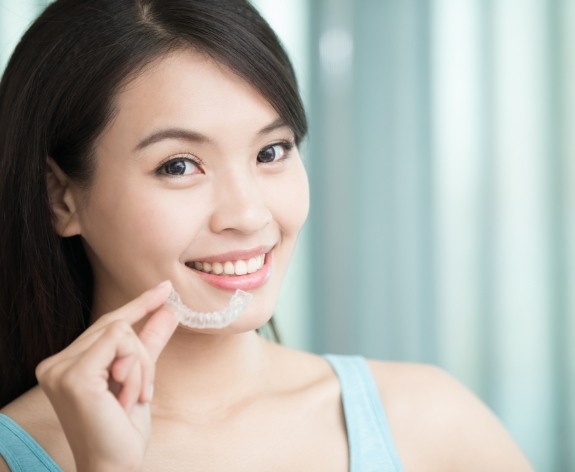
Both Invisalign and traditional braces offer great benefits to patients looking to straighten their teeth; however, some key points differentiate the two types of treatment. As you contemplate which one is right for you, it’s important to know why more than 17 million patients have chosen Invisalign. Below, you’ll find the answer!
The Aligners Are Practically Invisible
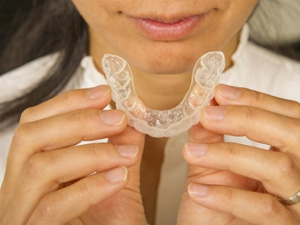
It’s no secret that traditional braces are quite noticeable and bulky. That’s why so many teens and adults don’t pursue orthodontic treatment, even if they are ready to leave overcrowding, overbites, and similar problems in the past. If you’re one of them, we have good news: Invisalign aligners can deliver the same beautiful results without calling unwanted attention to your smile.
You Can Eat All of Your Favorite Foods

Another considerable benefit of Invisalign aligners is that they are removable. As a result, you can eat all of your favorite foods without worrying about possible damage. Just make sure to always remove your aligners and store them properly first. Then, when you’re done eating, brush your teeth and put your trays back on. This will make meeting the 20+ hour-a-day wear time significantly easier.
Maintaining a Healthy Smile Is Easy
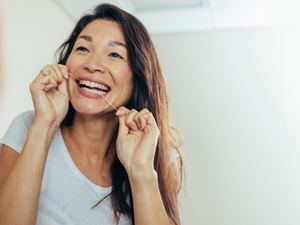
Since traditional braces are bonded in place, patients often need to buy special oral hygiene tools to clean around them, like an interproximal toothbrush. That’s not necessary with Invisalign because the aligners are removable. As a result, you can brush, floss, and rinse with mouthwash like usual. Just be sure to clean your aligners too. That way, stubborn stains and unpleasant odors don’t develop!
The Average Treatment Timeline Is Shorter
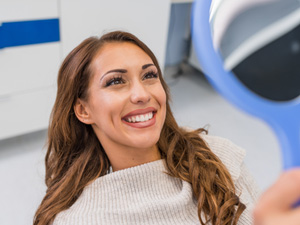
While there are several factors that play a role in the length of a patient’s treatment timeline, traditional braces typically take longer. In fact, while traditional braces deliver results in 2-3 years on average, Invisalign often achieves the desired outcome in just 12-18 months. So, if you want to have your dream smile sooner rather than later and you’re looking for an Invisalign provider near you, get in touch with us!
There Aren’t Any Metal Components

It’s true! Although traditional braces use metal brackets and wires to guide teeth into proper alignment, Invisalign uses clear trays made of smooth plastic. As a result, the teeth-straightening process is considerably more comfortable and causes little (if any) soft tissue irritation.
There Are Fewer Check-In Visits
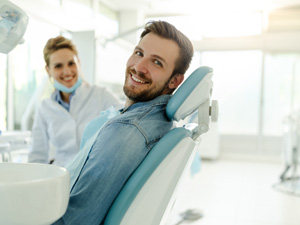
Last, but definitely not least, Invisalign also requires fewer in-house visits with your orthodontist. You’ll be given several sets of aligners at a time so you can progress through portions of your treatment at home. Then, every 6-8 weeks, you’ll come to our office so Dr. Ishani can monitor your progress and make any necessary adjustments to your treatment plan.
Living with Invisalign Aligners

Now that you know a little more about how Invisalign works (and the many benefits that come with clear aligners), you might be wondering what your day-to-day life will look like. If so, you’re in the right place! Below, you will find helpful information on how to meet the daily wear time, how to clean your aligners, what to do if one of your aligners breaks, and more.
Wearing Your Trays

Wearing your Invisalign aligners for 20 hours a day is key to staying on-track with your treatment plan. So, it’s important that you find a routine that works for you! Many patients find it helpful to set aside a certain amount of time for each meal, like 30 minutes for breakfast, 40 minutes for lunch, and 45 minutes for dinner. It’s also important to multi-task where you can, like soaking your aligners in the cleaning solution while you eat.
Cleaning Your Aligners
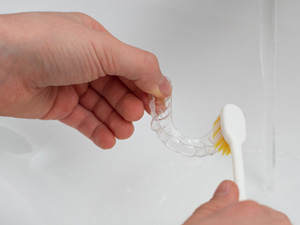
Speaking of cleaning solutions… You can use the cleaning crystals that came in your welcome kit when your aligners need a deeper clean. On a day-to-day basis, however, a soft-bristled toothbrush and clear, mild dishwashing liquid should do the trick.
Tip: When you take your aligners off, rinse them with clean, cool water! This will help prevent saliva, food particles, and other debris from hardening on the surface.
Eating & Drinking

With traditional braces, there is a long list of dietary restrictions. Since the aligners are removable, that’s not the case with Invisalign! As your orthodontic team, all we ask is that you are mindful of how your diet impacts your oral health. For example, if you over-indulge on sugary and starchy snacks, then you’re more likely to develop tooth decay and, in turn, experience treatment plan delays. So, stick to mostly healthy, well-balanced meals filled with nutrient-dense foods, like seasonal fruits and vegetables.
Losing or Damaging a Tray

Unfortunately, losing or damaging a tray can lead to significant treatment plan delays. That’s why we recommend doing what you can to prevent that from happening, like storing your aligners in their designated case when you aren’t wearing them.
With all of that said, accidents sometimes happen. We recommend calling us ASAP if you find yourself in this situation so we can quickly determine the best way to get you back on-track with your treatment plan.
Attending Routine Check-Ins
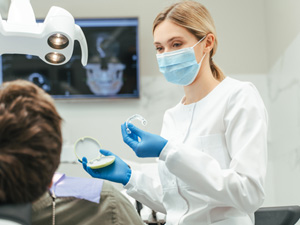
Fortunately, there aren’t monthly adjustment appointments with Invisalign. There are, however, check-in visits every 6-8 weeks. These routine appointments allow Dr. Ishani to see if your teeth are moving as anticipated. If they aren’t, then he will determine why that is and what adjustments need to be made to your treatment plan. If they are, then he will give you your next several sets of aligners and schedule your next visit!
Invisalign Teen
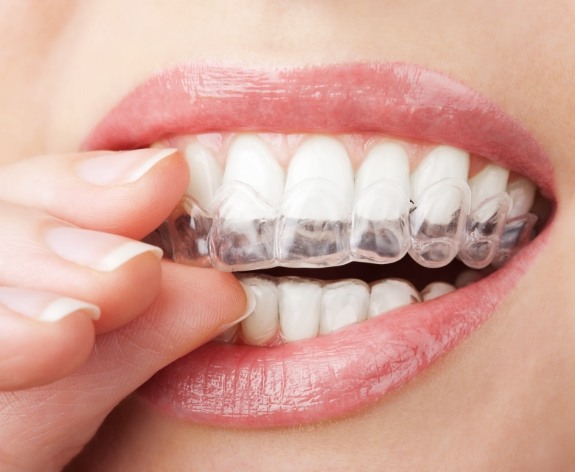
Does your teenager feel self-conscious because their teeth are overlapped or spaced-out? Do they have trouble chewing efficiently because their bite isn’t aligned properly? If so, you may want to consider Invisalign Teen. With this discreet orthodontic treatment, Dr. Ishani and the rest of our talented team can discreetly guide your child’s teeth into their properly aligned positions, improving the look, health, and function of their smile in the process. Want to learn more about Invisalign Teen? Then read on!
How is Invisalign Teen Different?
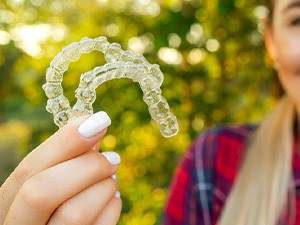
Working similarly to traditional Invisalign aligners, the plastic trays with Invisalign Teen have a few key differences. Not only do they contain a blue dot that gradually fades over time and serves as a reminder of when they need to be replaced with new trays, but teens typically need more replacement aligners because of their likelihood of misplacing them. With this nearly invisible solution, though, teenagers can enjoy the treatment process with greater peace of mind.
Is Invisalign Right for Your Teen?
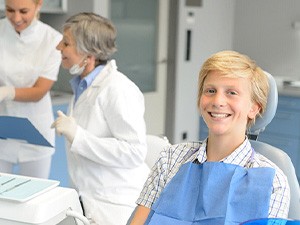
Since candidacy is determined on a case-by-case basis, we can’t answer that question without a consultation. During this appointment, we will conduct a thorough oral exam, take X-rays, and scan your teen’s teeth in order to determine important information, like if they have any existing oral health issues or if their case of malocclusion is so complex that it warrants traditional braces. With all of that said, many teens are good candidates for Invisalign. So, if your child is interested in improving the alignment of their teeth and the look of their smile without the metal, don’t hesitate to schedule an appointment with our Oklahoma City orthodontist!
The Benefits of Invisalign Teen

Naturally, one of the biggest perks of Invisalign Teen is that the clear aligners are see-through, making them virtually undetectable when worn. However, there are other benefits that are equally as noteworthy:
- There aren’t any dietary restrictions – So, your teen won’t have to avoid whole apples, raw celery, and other crunchy foods entirely.
- They can still play sports – If your child plays a non-contact sport, they can keep their aligners in. If they participate in wrestling, football, or something similar, then they will need to take their aligners out and wear a mouthguard instead.
- Short check-in visits – The routine appointments at our office are crucial in keeping your child on-track with their treatment plan. Fortunately, these visits are usually quite short, so they can fit in easily to even the busiest of schedules!
Understanding the Cost of Invisalign
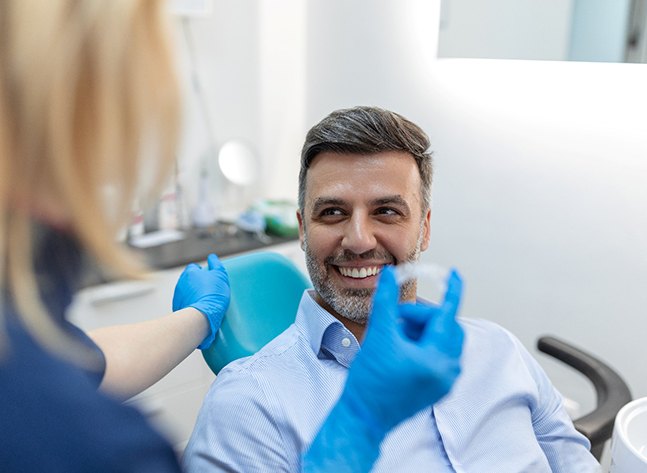
Now that you know more about how Invisalign works and the benefits of this innovative orthodontic treatment, you might be wondering, “How much does it cost?” If you want a precise estimate, then we recommend scheduling an appointment with our Oklahoma City orthodontist, Dr. Payam Ishani. If you’d simply like to learn more general information on the topic – including if dental insurance covers a portion of the cost – then read on!
Factors That Affect the Cost of Invisalign
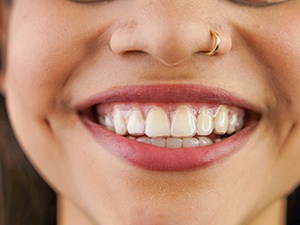
We mentioned above that in order to give you a precise estimate of the cost of Invisalign, we need to see you for a consultation. That’s because we need to determine the severity of your misalignment, if we need to straighten one or both arches of teeth, if rubber bands need to be added to your treatment plan, and other important information. Down the line, there may be additional costs if you fall off-track, which is usually the case for patients who don’t wear their aligners for 20+ hours a day or who consistently need replacement trays made.
Invisalign vs. Smile Direct Club™: Which Costs More?
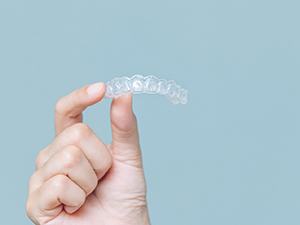
When comparing the upfront cost of Invisalign to mail-order alternatives, you’ll quickly see that the latter is cheaper. However, the latter also skips the initial consultation, relies on DIY impressions, and has several lawsuits from previous patients who experienced serious complications, like teeth that fell out. These are just a few of the many reasons the American Dental Association and other professional organizations don’t recommend using orthodontic alternatives, even if they are cheaper.
Does Dental Insurance Cover Invisalign?

That depends! After all, dental plans aren’t exactly the same from patient to patient. Typically, however, insurance providers cover upwards of 50% of the total cost if the treatment is “medically necessary.” Even then, there are yearly deductibles, annual maximums, and waiting periods to consider. That’s why we encourage our patients to thoroughly review the fine print on their plan and reach out to us with any questions that come up along the way.
Options for Making Invisalign Affordable
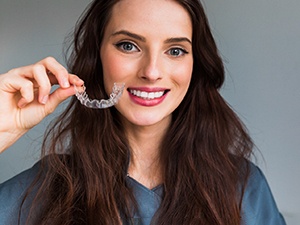
Of course, dental insurance isn’t the only financial solution we welcome. To begin, we offer periodic special offers, like no-cost orthodontic consultations, helping reduce your out-of-pocket expenses. We also are happy to accept CareCredit, which is a trusted third-party financier that’s helped millions of patients around the world. Basically, their payment plans allow you to space out the cost into manageable chunks instead of paying for the entire thing at once. Sometimes, there is little-to-no interest attached too!
Invisalign FAQs
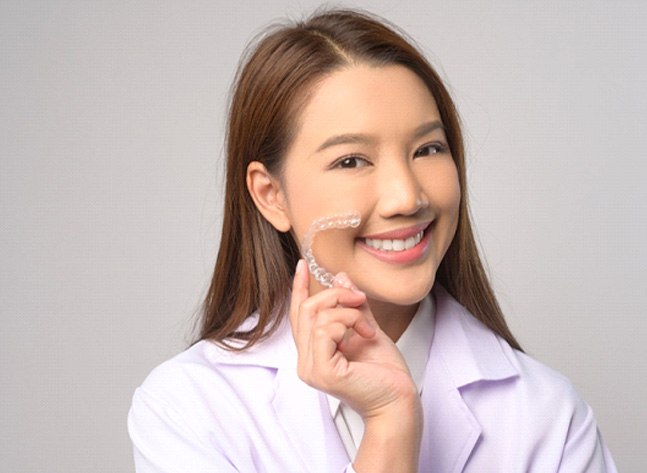
At their initial consultation, patients have all sorts of questions for our Oklahoma City dental team. Does Invisalign hurt? How long will it take to straighten my teeth? Can I still drink coffee? That’s why we’ve dedicated this next section to answering some FAQs about Invisalign. Of course, if you can’t find the answer you’re looking for or you’d like further details, you’re always welcome to give us a call too!
Does Invisalign Hurt?
To be honest… any orthodontic treatment will come with some discomfort – that means your teeth are moving! With that said, Invisalign is considered one of the most pain-free teeth-straightening treatments because the aligners are custom-made for each patient and there aren’t any metal brackets and wires to worry about. Plus, there are several ways you can effectively alleviate any discomfort that does arise, like sipping on cold water, avoiding crunchy foods, and taking OTC pain medication as instructed.
How Do I Clean My Invisalign?
You really only need two things: clean water and a soft-bristled toothbrush. First, rinse your aligners off with clean, room-temperature or cold water. Then, dampen the bristles of your toothbrush before gently scrubbing each surface. When you’re done, rinse them off again, and that’s it!
Note: If your trays are starting to turn yellow, then you can also use the cleaning crystals that come in your Invisalign welcome kit. All you need to do is fill up a container with clean, lukewarm water and add a packet of cleaning crystals to it. Then carefully place your trays in the mixture and shake the container to dissolve the crystals. Let your aligners soak for about 15 minutes before rinsing them off thoroughly.
Can I Drink Coffee with Invisalign?
Don’t worry – you won’t have to give up coffee or any other dark-colored beverages during your Invisalign treatment! Just make sure to remove your aligners before indulging. That way, they don’t stain and any lingering residue from your beverage isn’t trapped against your teeth for hours on end. In other words, you can only drink water with your aligners in.
How Long Does Invisalign Take?
Invisalign on average takes 12-18 months. However, it’s possible for your treatment timeline to be significantly shorter or longer. For example, if your case of malocclusion is relatively minor, then we may be able to straighten your teeth in just six months. On the opposite end of the spectrum, you could end up wearing clear aligners for well over two years if you constantly misplace them or don’t wear them for 22 hours a day.
What Happens After Invisalign?
After you’re done with Invisalign, we will take impressions of your teeth so a custom retainer can be made. This process usually takes a few weeks, so we will ask you to continue wearing your last aligner in the meantime. Once your retainer arrives at our office, you’ll come in for your “last” appointment, which is when we will make sure it fits and give you detailed instructions on when to wear it. For many patients, we recommend wearing it as often as possible for the first few months before eventually transitioning to only wearing it at night.
Can Invisalign Fix Overbites?
Invisalign can fix several common bite problems, including overbites. So, if your upper teeth protrude beyond your lower ones more than they should, don’t just assume metal braces are your only option! If your case isn’t too severe, there’s a good chance that we can achieve the same beautiful results with clear aligners. Ultimately, the best way to find out if you’re a good candidate is by scheduling a consultation with us, so don’t hesitate to give us a call to get yours on the calendar.
Is There Anything I Can’t Eat with Invisalign?
There aren’t any dietary restrictions with Invisalign because the aligners are removable. There are, however, some foods that increase the chances of you developing a cavity or breaking an attachment. That’s why we recommend limiting your intake of taffy, ice cream, hard pretzels, and peanut brittle. Instead, focus on adding foods to your diet that benefit your oral health, like bananas, oatmeal, and cottage cheese.
What Should I Do If I Lose One of My Invisalign Aligners?
Having clear aligners is great… until you lose them. If you find yourself in this situation, try retracing your steps, starting with the last place you know you had them. There’s a good chance that you’ll find them somewhere unexpected, like the center console of your car or the pockets in the pants you were wearing earlier, so do your best to be thorough. If you’ve looked and looked but can’t find your aligners anywhere, then call our Oklahoma City office. Then, a helpful member of our team can determine if it’s safe to move on to the next set in the series a bit earlier than anticipated.
Will I Need Invisalign Attachments?
That’s something that our dedicated orthodontist, Dr. Payam Ishani, will decide when creating your custom treatment plan. If the answer is “yes,” you don’t have to worry – they are considerably more discreet than metal brackets. Plus, there’s a good chance that they will be removed as you progress through your treatment plan.
Can You Get Invisalign After Braces?
It’s possible, yes. So, if you’ve experienced orthodontic relapse in the years following your time with braces, don’t feel like you have no choice but to settle for a smile you’re not happy with. If we decide together that Invisalign is the best orthodontic treatment for you, then we can shift your teeth and bite into proper alignment with a series of clear, comfortable, and convenient aligners (often in just 12-18 months, too!).
Does Invisalign Give You a Lisp?
Since your tongue moves against the back of your teeth to create sound, it’s natural for there to be a bit of an adjustment period when you first get your aligners. With that said, the vast majority of patients don’t experience any changes to their speaking patterns. Plus, the few that do can have peace of mind knowing that it’s only temporary, and the adjustment period can be expedited with lots of practice!
